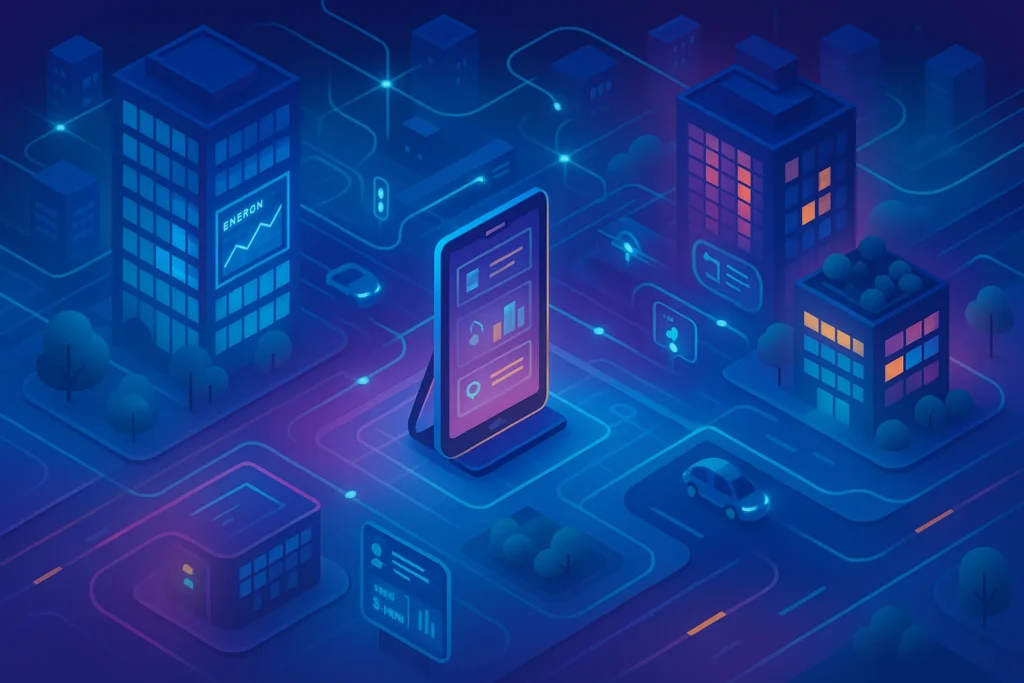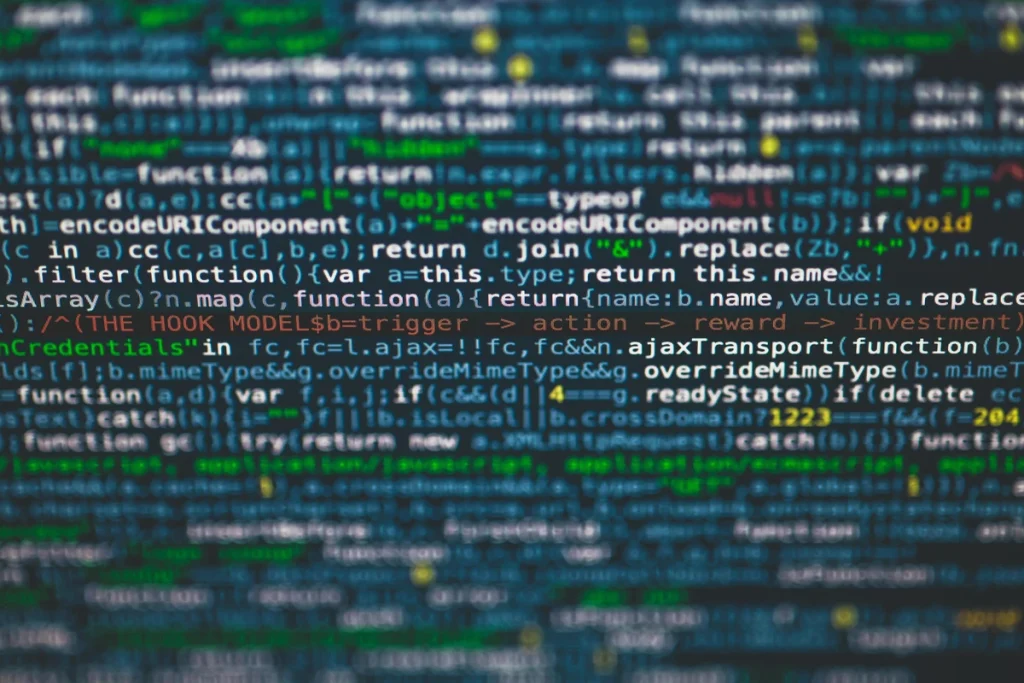🚀 Introduction: The Rise of Smart Cities
Cities are evolving — and it’s not just about new buildings or sleek transportation. The real transformation is happening beneath the surface, powered by artificial intelligence (AI) and the Internet of Things (IoT). Together, they’re creating smarter, safer, and more sustainable urban environments.
From traffic lights that adapt to real-time conditions, to AI-driven energy distribution that reduces waste, the way we interact with our cities is changing. These advancements are not futuristic anymore — they’re already happening in cities like Singapore, Barcelona, Dubai, and even mid-sized towns experimenting with smart grids and sensor networks.
In this post, we’ll explore how AI and IoT are shaping the cities of today and tomorrow — what technologies power them, how they improve our daily lives, and what to expect from the urban future ahead.
🚦 Smart Traffic Systems: Real-Time Algorithms Reducing Congestion
Traffic has long been one of the most frustrating aspects of urban life — but AI is starting to change that. Smart traffic systems powered by real-time data analytics, computer vision, and connected sensors are now optimizing traffic lights, adjusting patterns based on live conditions, and even predicting congestion before it happens.
Key Innovations:
-
Adaptive Traffic Signals that respond to flow instead of fixed timers
-
Vehicle-to-Infrastructure (V2I) communication between cars and city systems
-
AI models that process camera feeds and sensor data to redirect traffic or alert emergency responders instantly
Cities like Pittsburgh have seen a 25% reduction in travel time and 40% fewer emissions after implementing adaptive traffic tech powered by AI. That’s not just convenience — that’s climate impact.
Cities like Pittsburgh have seen a 25% reduction in travel time and 40% fewer emissions after implementing adaptive traffic tech powered by AI. This is a prime example of how edge computing enables ultra-fast decision-making right where data is generated — a concept we explored deeply in our post on Edge AI and its role in IoT devices.
⚡ AI-Optimized Energy Grids: Efficient Distribution in High-Density Zones
Traditional energy grids are reactive. Smart energy systems, however, are proactive, predictive, and self-adjusting — thanks to the marriage of AI and IoT.
Smart cities now use machine learning to balance supply and demand in real time. They detect faults, reroute energy, and even work with renewable sources like solar and wind for greener output.
How AI Improves Urban Energy:
-
Predicting consumption spikes based on weather, time, and behavior
-
Redirecting electricity flow during outages or overloads
-
Real-time efficiency reports for buildings and zones
For instance, IBM Watson IoT for Energy can analyze millions of data points from smart meters and deliver optimization decisions within seconds — cutting down both waste and cost.
Platforms like IBM Watson IoT are already helping cities reroute electricity and forecast surges in real-time — a critical feature as we face rising energy demands and the push for sustainability. For a broader look at how tech is driving green transformation, check out our article on how digital innovation is tackling climate change.
🏢 Connected Public Services: Apps, Chatbots, and Citizen-Centric Design
Gone are the days when dealing with public services meant long lines, paperwork, or clunky websites. In a smart city, public administration is digitally transformed, often accessible from your phone, 24/7.
Examples of AI-Enhanced Services:
-
Chatbots for citizen support, issuing permits or responding to questions
-
Mobile apps for parking, public transport tracking, waste collection
-
Predictive maintenance of city infrastructure — fixing issues before citizens report them
In cities like Tallinn, Estonia, 99% of public services are online — powered by integrated AI systems. These tools create smoother interactions between citizens and government, increase transparency, and reduce overhead costs.
In cities like Tallinn, Estonia, nearly all public services are accessible online — a model increasingly common in sectors like healthcare too. We discussed this digital evolution in our breakdown of how AI is transforming the healthcare system, with many parallels in government applications.
🌍 Sustainability Benefits: Reducing Pollution and the Urban Carbon Footprint
Smart cities don’t just make life more convenient — they make it more sustainable. By reducing waste, optimizing resources, and enabling renewable energy integration, they play a vital role in fighting climate change.
Environmental Gains from Smart Tech:
-
Dynamic street lighting that dims when no movement is detected
-
AI-managed recycling and smart bins
-
IoT-powered air quality sensors that trigger policy alerts or public health advisories
For example, Amsterdam’s smart initiatives led to 12% reduction in CO₂ emissions within five years. These are real, measurable impacts.
Amsterdam’s smart city model has already achieved a measurable reduction in emissions through AI-powered street lighting, smart bins, and clean transportation. These approaches align closely with broader green tech innovations we’ve explored, showing how digital infrastructure can actively shape a cleaner planet.
🔮 Vision of Future Cities: From Sensors to Autonomous Infrastructure
What does a fully intelligent city of the future look like?
Imagine waking up in a building that adjusts its temperature based on your schedule. Your car routes itself around traffic, while AI bots handle your waste pickup, utility reporting, and even suggest local events based on your mood history.
This is where AI-driven urban orchestration leads us:
-
Sensor-rich environments collecting data from every corner of public life
-
Autonomous infrastructure that repairs, reports, and evolves itself
-
Personalized civic experience based on citizen data profiles
And it’s not far away. Pilot cities in South Korea, UAE, and Canada are already testing full-stack autonomous governance tools.
As sensor networks expand and cities move toward autonomous governance, we inch closer to a fully orchestrated urban ecosystem. We covered this transition in depth when looking ahead to the top AI and future tech predictions for the next decade — a must-read if you’re curious about where this is all headed.
📬 Want More Smart AI Tips Like This?
Join our free newsletter and get weekly insights on AI tools, no-code apps, and future tech—delivered straight to your inbox.
No fluff. Just high-quality content for creators, founders, and future builders.
🔐 100% privacy. No noise. Just value-packed content tips from NerdChips.
🏙️ Case in Action: Barcelona’s Smart Mobility Transformation
Barcelona is one of Europe’s most advanced smart cities — and its mobility plan is a textbook example of AI and IoT in action. The city implemented:
-
Over 500+ traffic and environmental sensors
-
Adaptive traffic lights that respond to congestion in real time
-
AI-enabled parking prediction, helping drivers find spots faster
-
Smart bus routing based on live demand
The results? A 21% CO₂ reduction over five years, a 42% drop in traffic-related complaints, and a citywide app where citizens report traffic or infrastructure issues directly, creating a real-time feedback loop between people and city systems.
This shows how strategic tech deployment, not just gadgets, defines a truly smart city.
⚠️ Challenges and Risks of Smart Cities
While the promise of AI and IoT in cities is powerful, it’s not without challenges — and smart urban design needs to tackle these head-on.
-
Privacy Concerns: Continuous data collection raises concerns about surveillance and personal data misuse.
-
Digital Divide: Not all citizens have equal access to apps or devices, potentially increasing inequality.
-
Legacy Infrastructure Conflicts: Retrofitting old systems with new tech often leads to delays, inefficiencies, or vendor lock-in.
-
AI Bias: Algorithms used in urban management may reflect or even amplify social or racial bias if not properly monitored.
🧠 A responsible smart city is one that embeds transparency, ethics, and human oversight into every AI system — from trash collection to predictive policing.
📊 Traditional City vs Smart City (Quick Comparison)
| Urban Feature | Traditional City | Smart City |
|---|---|---|
| Traffic Management | Timed stoplights | AI-driven adaptive traffic flow |
| Power Distribution | Fixed, reactive grids | Predictive smart energy systems |
| Public Services | Manual or delayed | App-based, AI-supported, 24/7 access |
| Waste Management | Scheduled pickups | Sensor-triggered, demand-based routing |
| Policy Making | Historical data only | Real-time analytics + citizen feedback |
This comparison highlights how the paradigm shifts from reactive to proactive, with citizen needs guiding design, not bureaucracy or outdated timelines.
🎓 The Jobs Smart Cities Will Create
The rise of intelligent infrastructure isn’t just changing how we live — it’s creating entirely new industries and job roles.
Here are just a few career paths emerging from smart urban systems:
-
Urban Data Scientists: Analyzing sensor outputs to inform planning
-
IoT Integration Engineers: Connecting physical infrastructure to cloud systems
-
AI-First City Planners: Designing systems with predictive analytics at the core
-
Smart Governance Consultants: Helping governments digitize ethically
As cities evolve, so must our skills. Understanding how tech interacts with policy, behavior, and infrastructure will be key to shaping urban life.
🧠 Nerd Verdict
Smart cities are no longer science fiction — they’re living systems reshaping how we move, work, consume energy, and interact with government. With AI and IoT at the core, these cities turn data into action, unlocking new levels of efficiency, sustainability, and personalized services.
Whether you’re a founder, policy-maker, developer, or curious resident, understanding how these systems work isn’t just inspiring — it’s essential. Because the future isn’t built later. It’s being coded right now, one traffic light, smart sensor, and AI algorithm at a time.
The fusion of AI and IoT doesn’t just simplify tasks — it redefines how we experience city life. From home automation to predictive waste systems, smart living through IoT is already within reach — and growing fast.
❓ FAQ: Nerds Ask, We Answer
💬 Would You Bite?
If your city could automate just one thing in your daily life using AI or sensors — what would it be?
👇 Drop your dream urban upgrade in the comments — let’s build smarter cities together.



